Oudong was the capital of Cambodia for almost 250 years until it was moved to Phnom Penh by King Norodom in 1866. Oudong was largely abandoned after the capital was moved but the monasteries, pagodas, and stupas remained in use. Only some 21 miles northwest of Phnom Penh, Oudong with it’s ancient structures and beautiful views has become a popular day trip destination for those who want to get out of the crowded capital city.
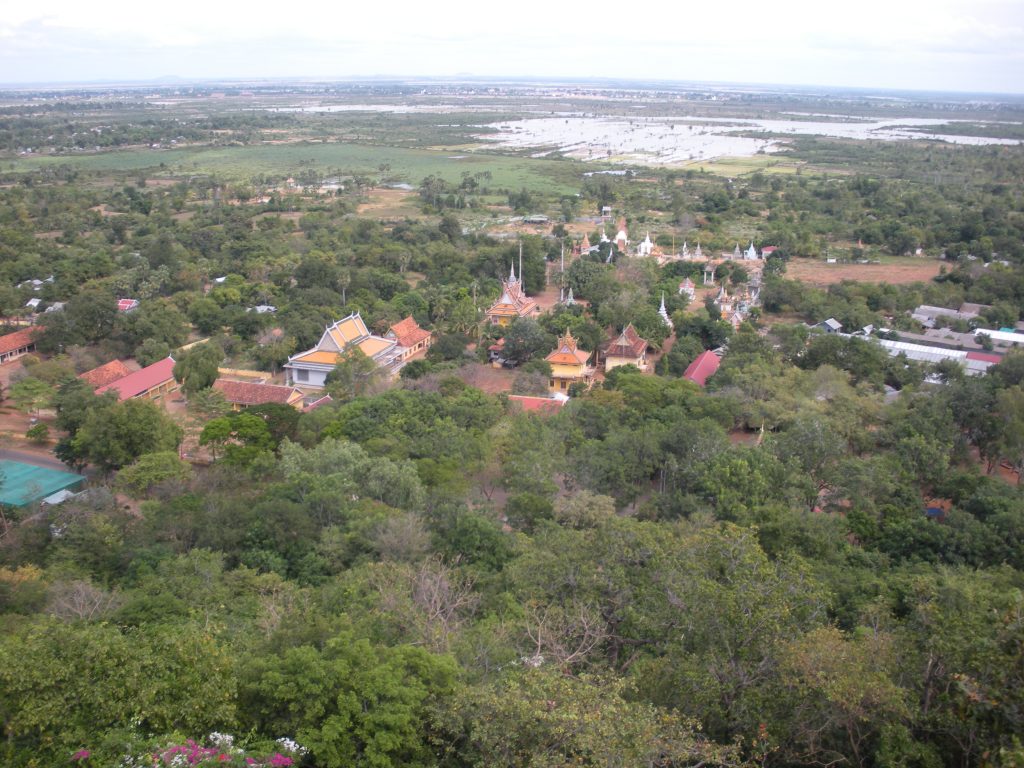
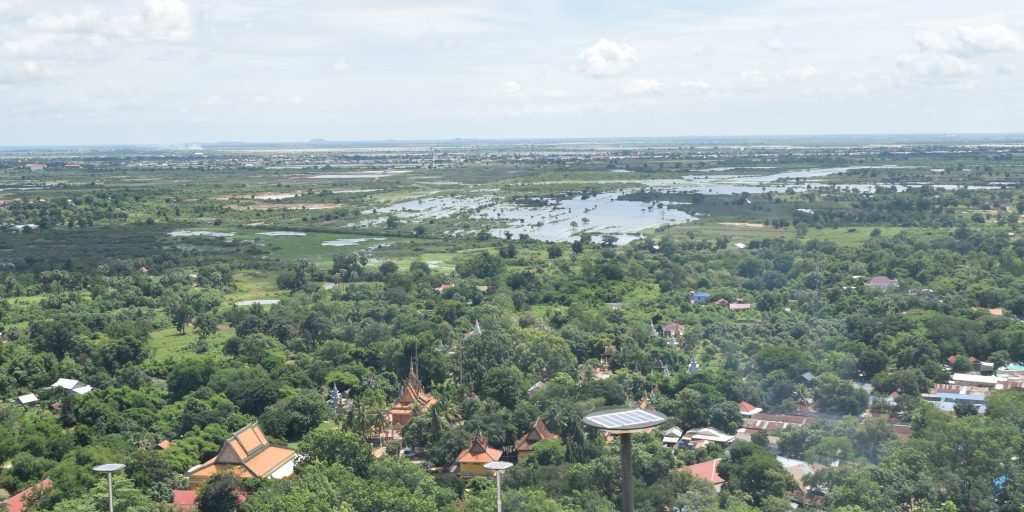
In December 2008, I visited Oudong as part of a larger trip to the Sap lake with three other service workers; Carol, Andy, and Lana. In September 2023, we visited Oudong along with some friends and a new service worker, Sabrina.
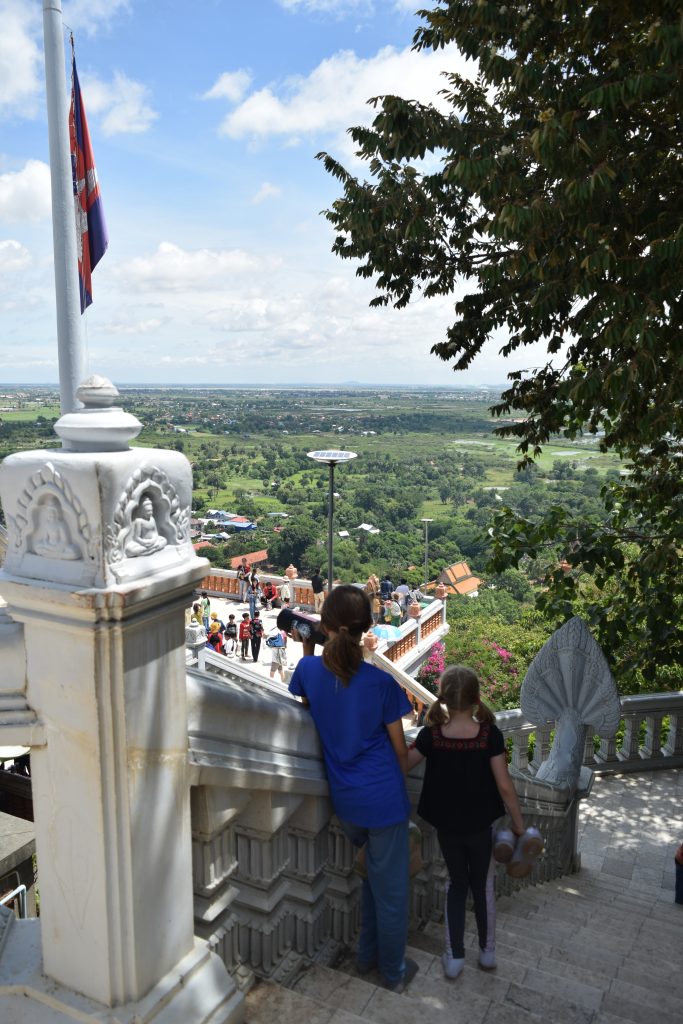
Nothing remains of the historic city of Oudong which, like Angkor Thom, was primarily comprised of wooden buildings. Only the stone infrastructure, stone monuments, and stone religious buildings remain. However, we do have a description of the city at it’s zenith from Henri Mouhout.
“Udong, the present capital of Cambodia, is situated north-east of Komput, and is four miles and a half from that arm of the Mekon which forms the great lake…Every moment I met mandarins, either borne in litters or on foot, followed by a crowd of slaves carrying various articles; some, yellow or scarlet parasols, more or less large according to the rank of the person; others, boxes with betel. I also encountered horsemen, mounted on pretty, spirited little animals, richly caparisoned and covered with bells, ambling along, while a troop of attendants, covered with dust and sweltering with heat, ran after them. Light carts, drawn by a couple of small oxen, trotting along rapidly and noisily, were here and there to be seen. Occasionally a large elephant passed majestically by. On this side were numerous processions to the pagoda, marching to the sound of music; there, again, was a band of ecclesiastics in single file, seeking alms, draped in their yellow cloaks, and with the holy vessels on their backs….The entire population numbers about 12,000 souls.”
Henri Mouhot, “Travels in the Central Parts of Indo-China”, 1864
If Ba Phnom in Prey Veng was the ancient prototype of the Khmer religious mountain city, then Oudong was the final version of it. Phnom Penh, built around an artificial hill rather than a natural mountain, set a different trajectory.
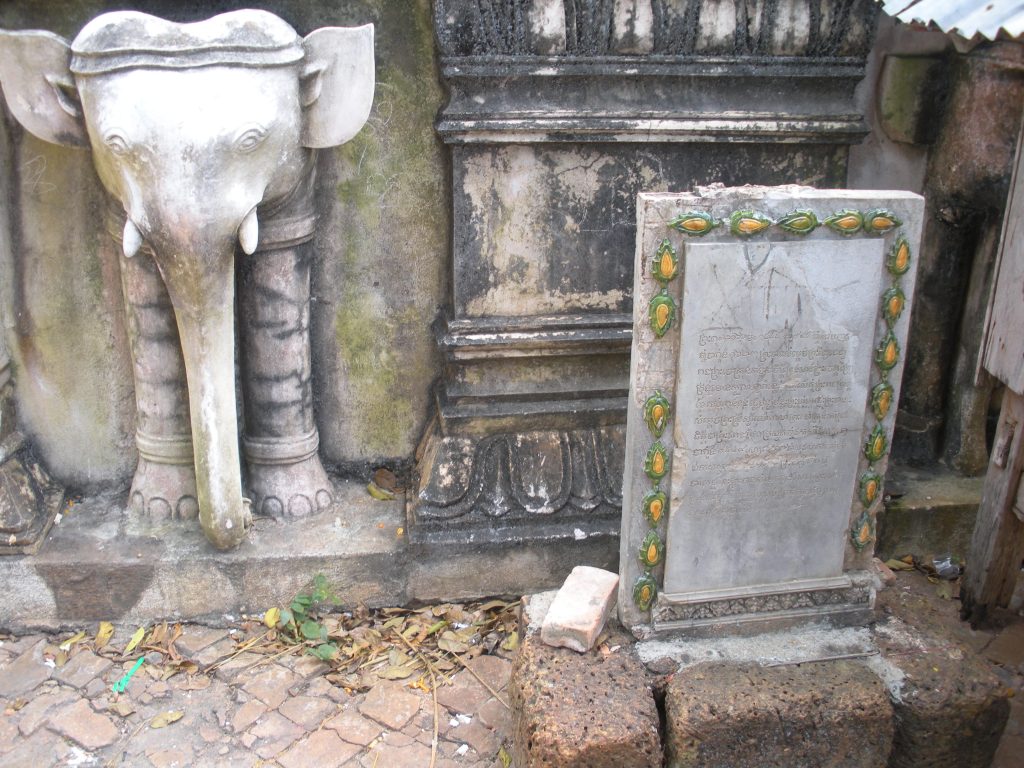
Oudong is full of people begging. In December 2008, I found this annoying until Andy pointed out that they were providing a service to Buddhist pilgrims; they were there so visitors could generate karma by giving alms. Fifteen years later, money changers approach you as soon as you park offering to trade larger bills for small ៛100 bill notes. About two and a half cents. I still didn’t join in giving alms but it helped to understand it from within the cultural context.
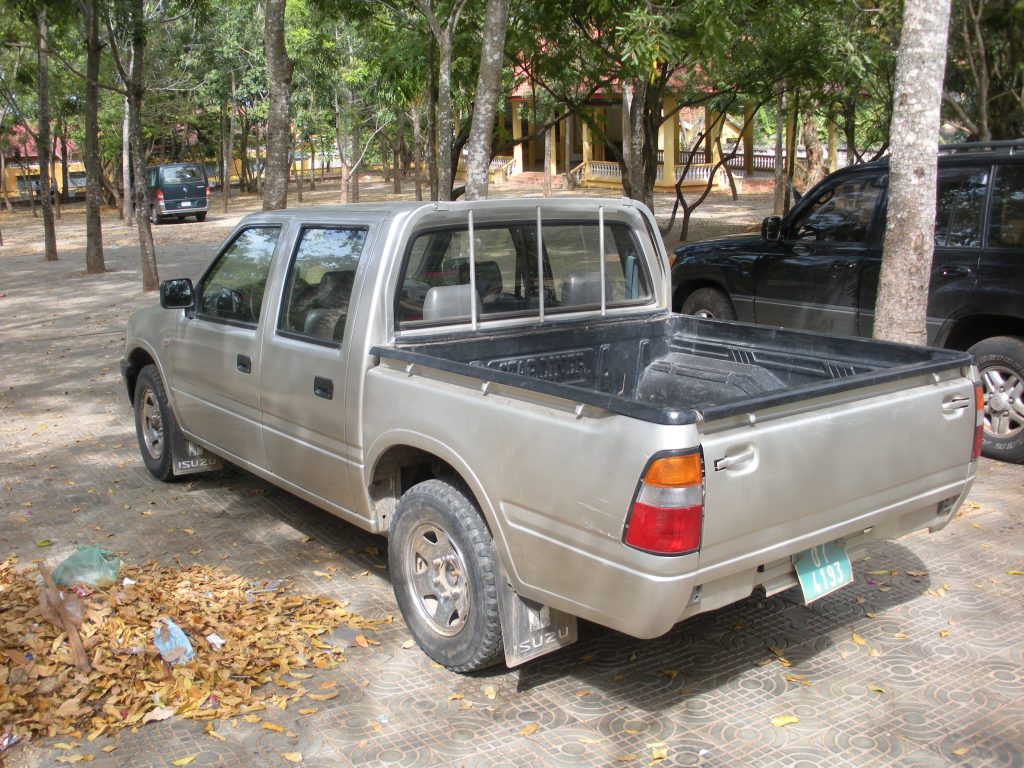
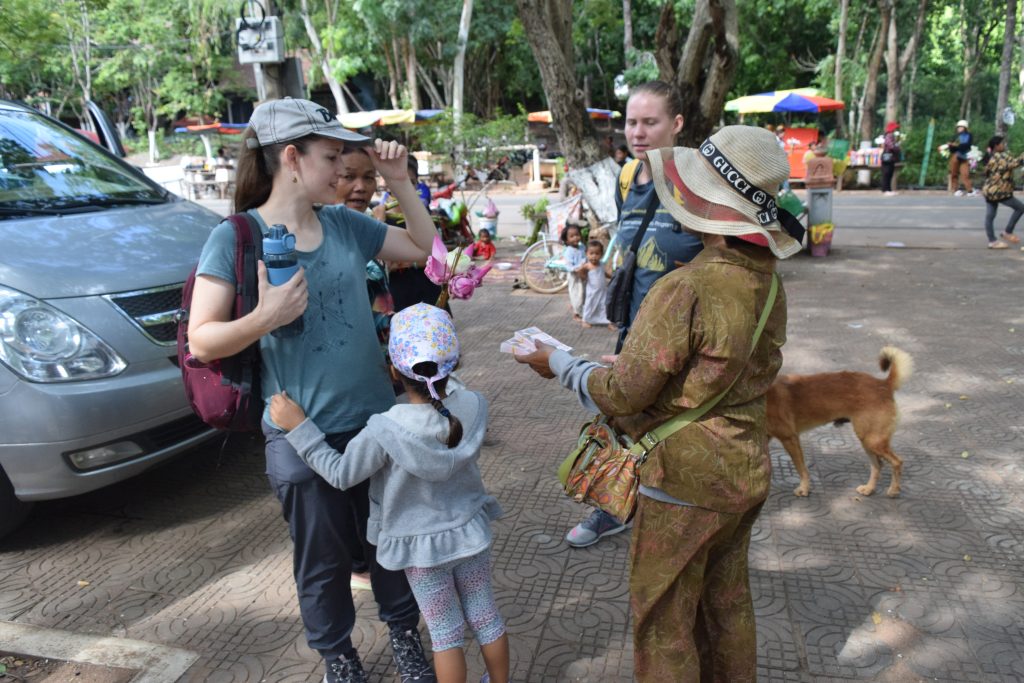
Oudong has one of my favorite parking lots in Cambodia. I don’t know that it was intended to be parking but it’s just a large tiled area interspersed with trees. The trees mark the parking spots. The trees were labeled Eugenia Sp, which Google tells me are Australian Brush Cherries. It hasn’t changed much since fifteen years ago except that there were many, many more vendors, beggars, and visitors. There’s a whole new market full of souvenirs, cheap toys, and very nice hats.
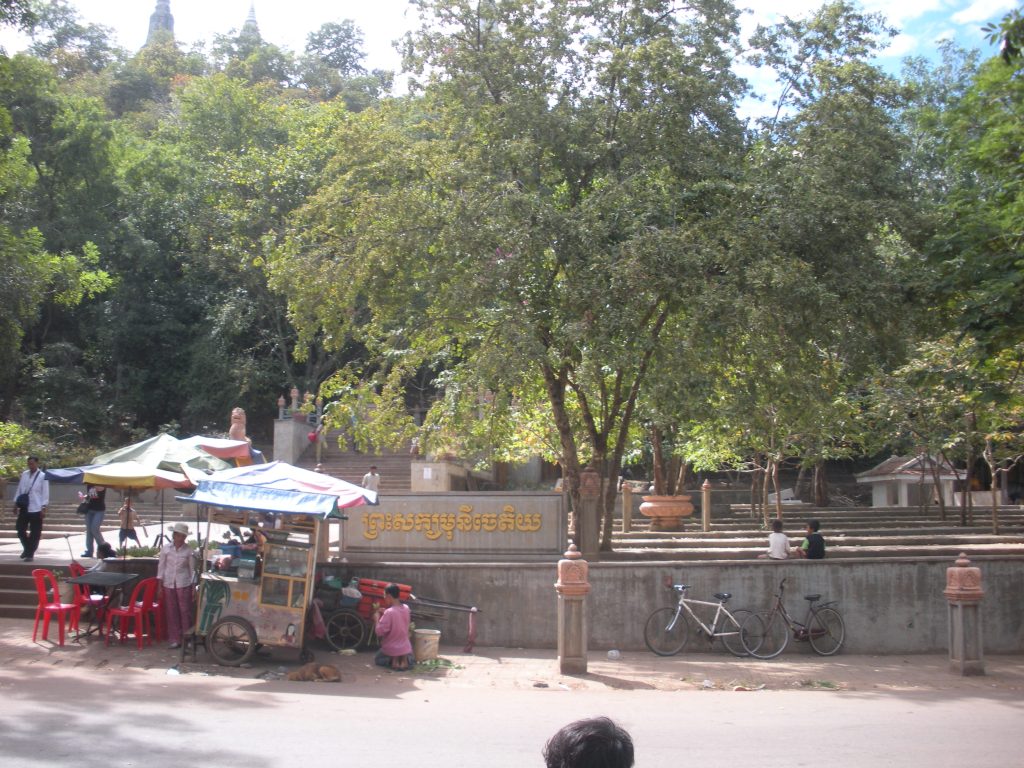
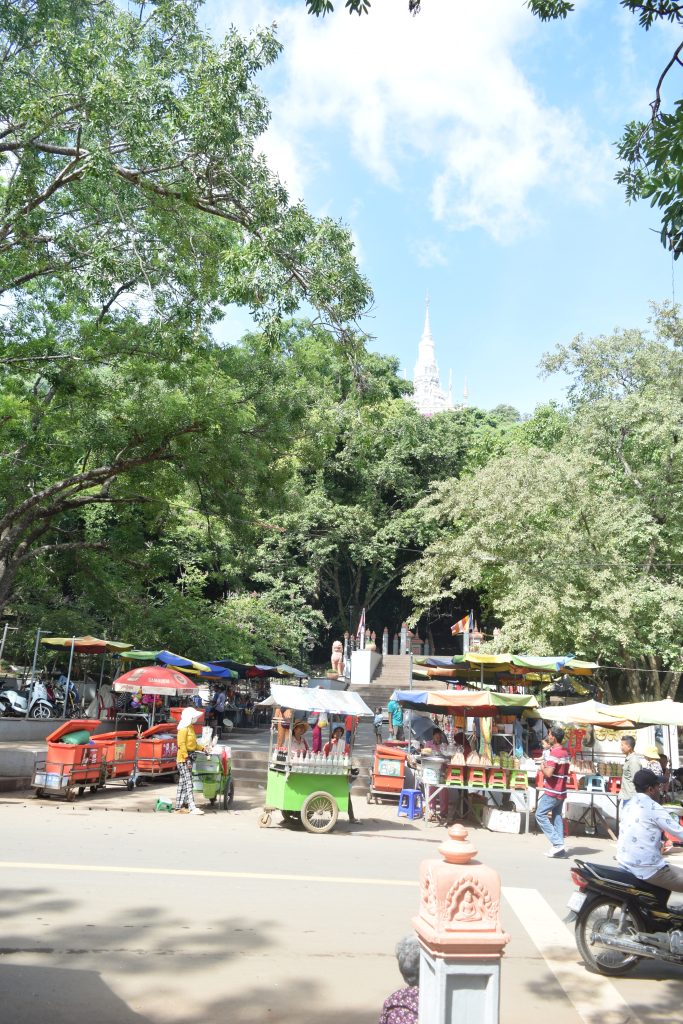
The main entrance to Oudong mountain is busier fifteen years later however we didn’t take it and instead took the longer back route up by the monastery.
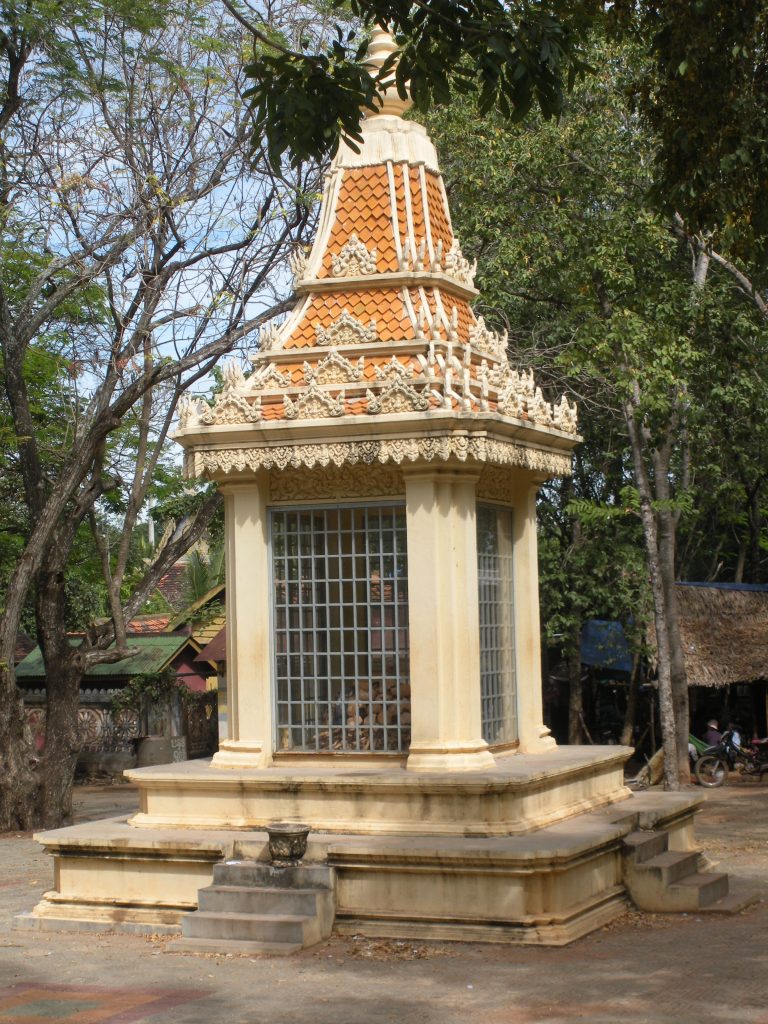
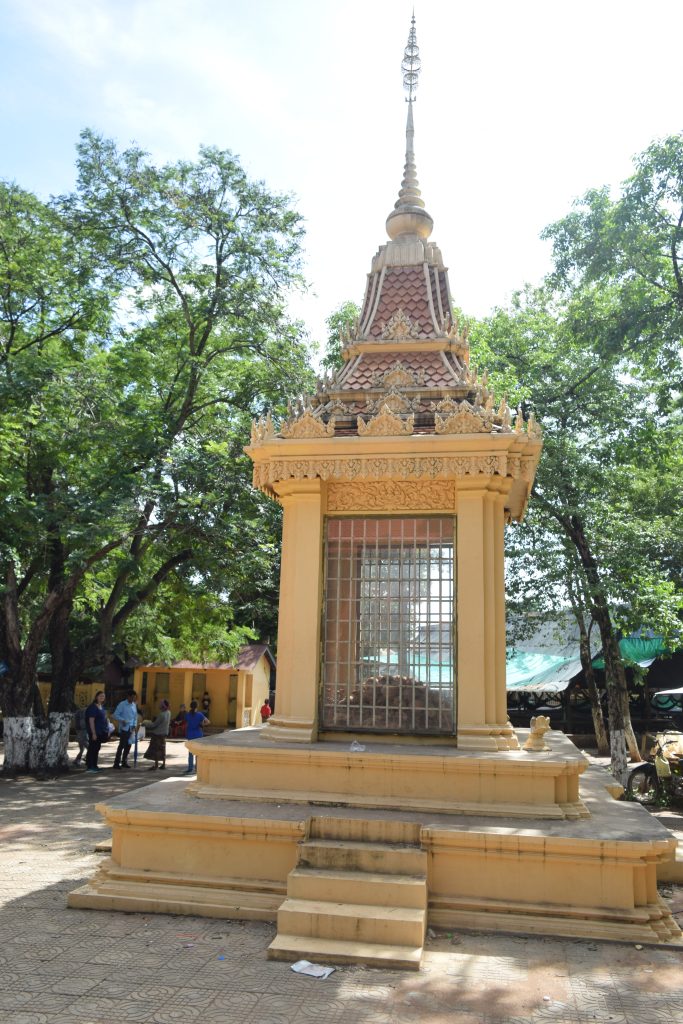
Near the parking lot is a stupa filled with skulls and bones commemorating those killed by the Khmer Rouge. These were originally built by the Vietnamese in the 1980s and can be found across the countryside. The one at Oudong was in good condition but many others – like the one near Ba Phnom in Prey Veng – are in severe neglect.
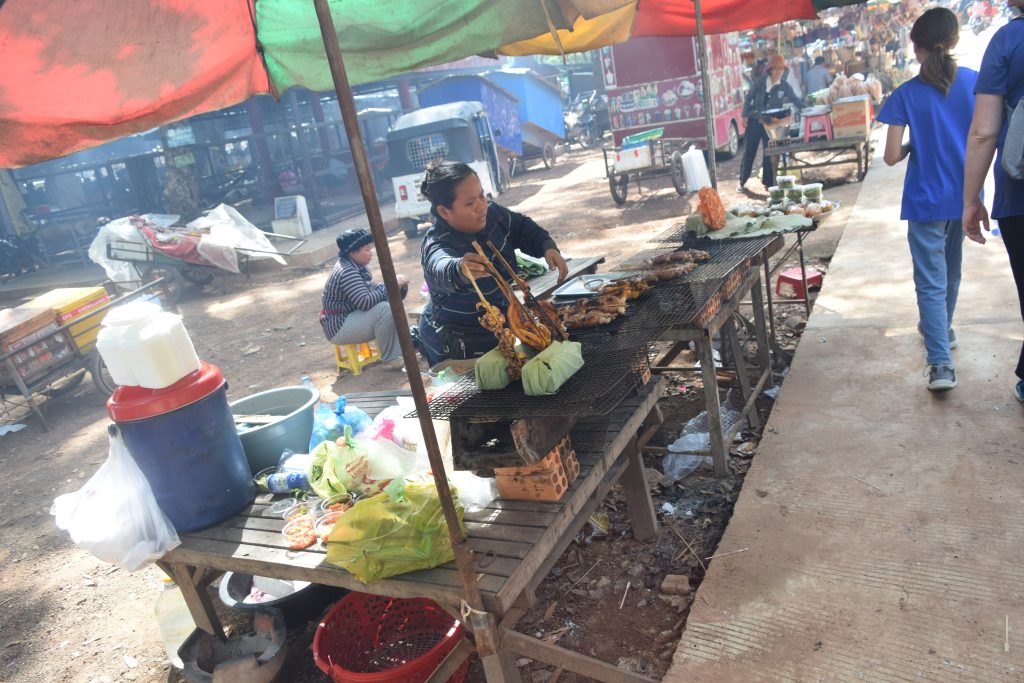
There’s a whole market of vendors now selling Khmer vacation food. Lots of fried frog, snake, fish, and so on. I remember there being some vendors fifteen years ago but not nearly this many.
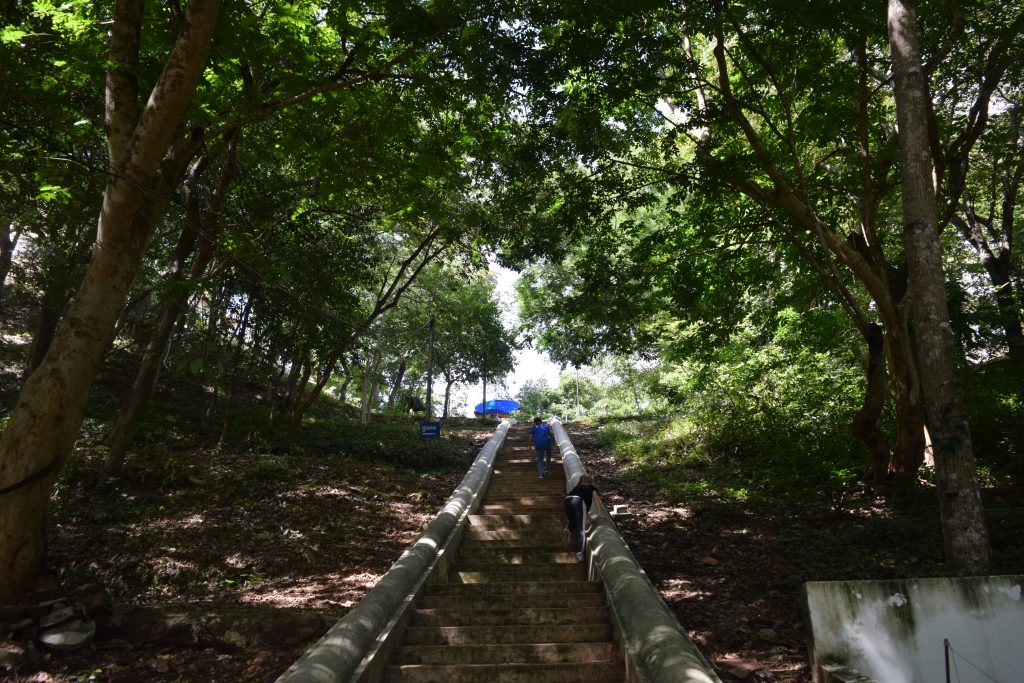
There are at least three stairways up Oudong mountain. Probably more. We took the back stairway up from the monastery. I think this is the way we came down back in December 2008 but my camera battery died during the hike so I don’t have photos.
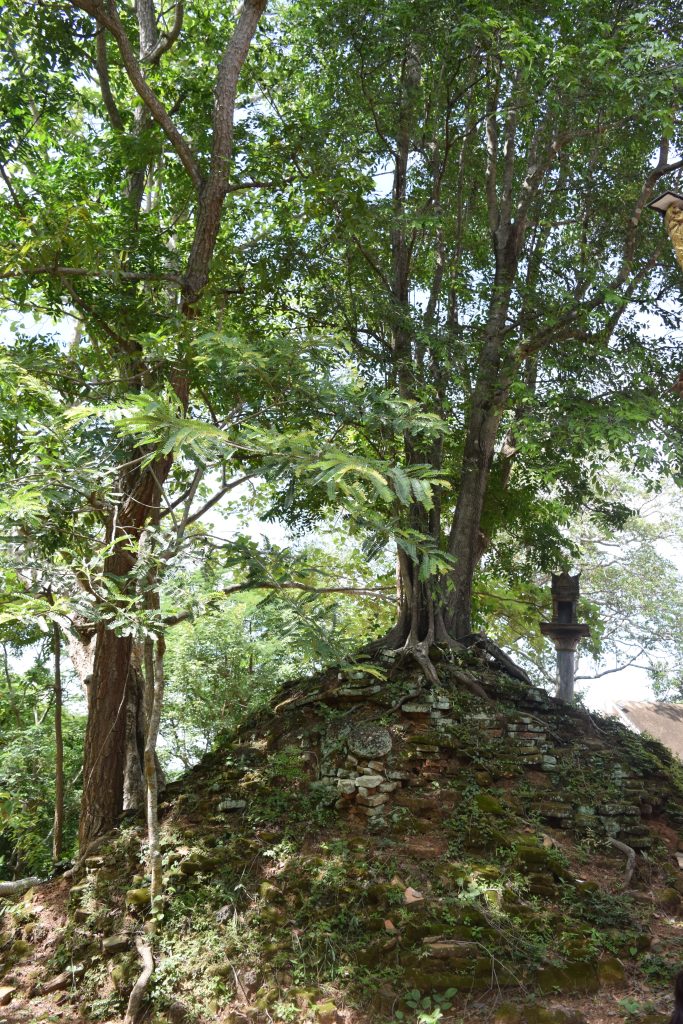
One immediately noticeable difference from fifteen years ago is that the tree cover has grown considerably. This meant that the hike was far more pleasant but that it was harder to look out over the countryside.
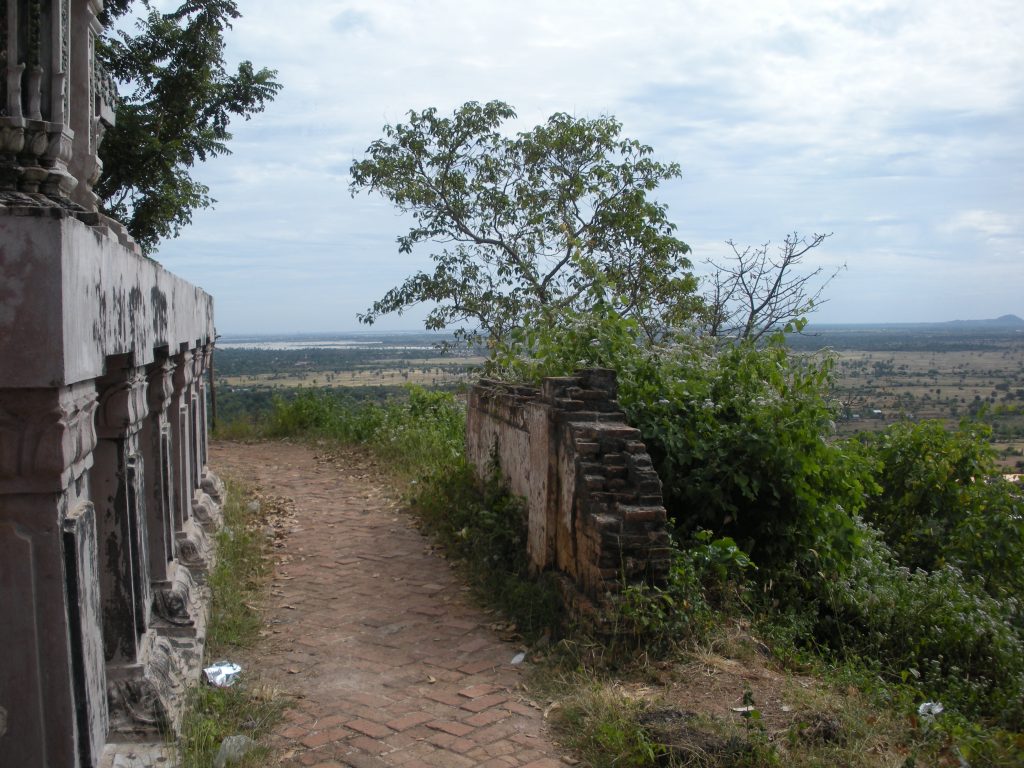
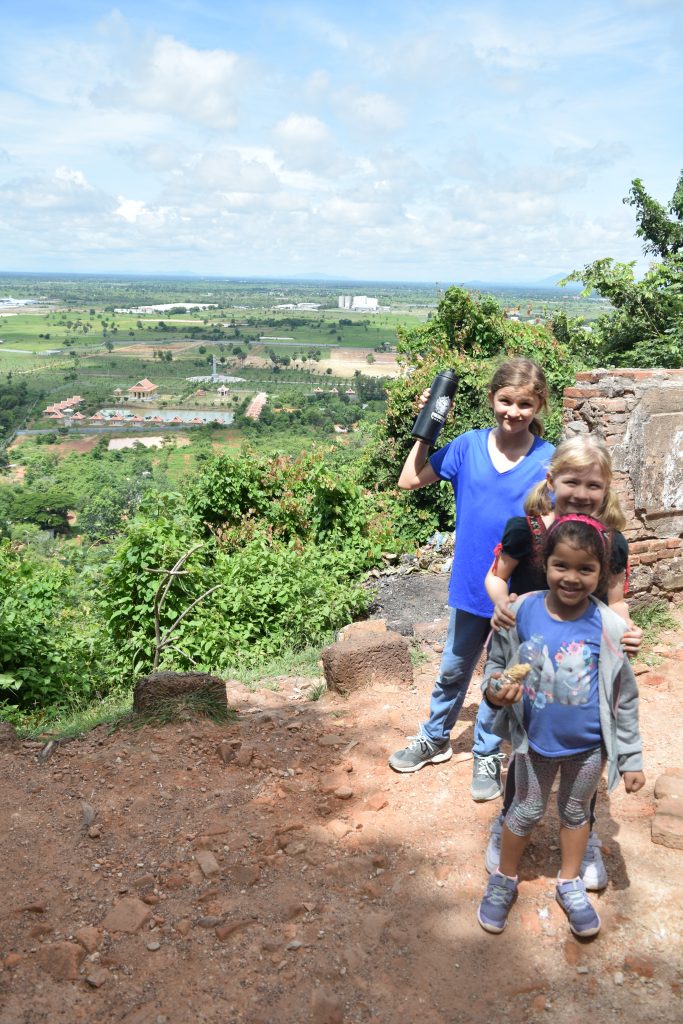
Fifteen years ago, this section of the walk had been laid with brick but now the bricks have almost entirely disintegrated. The view is still breathtaking though many of the rice fields are now dotted with buildings. There is a seasonal difference too; September is rainy season while December is cool season. The greenery in the September photos has that lush rainy season feel.
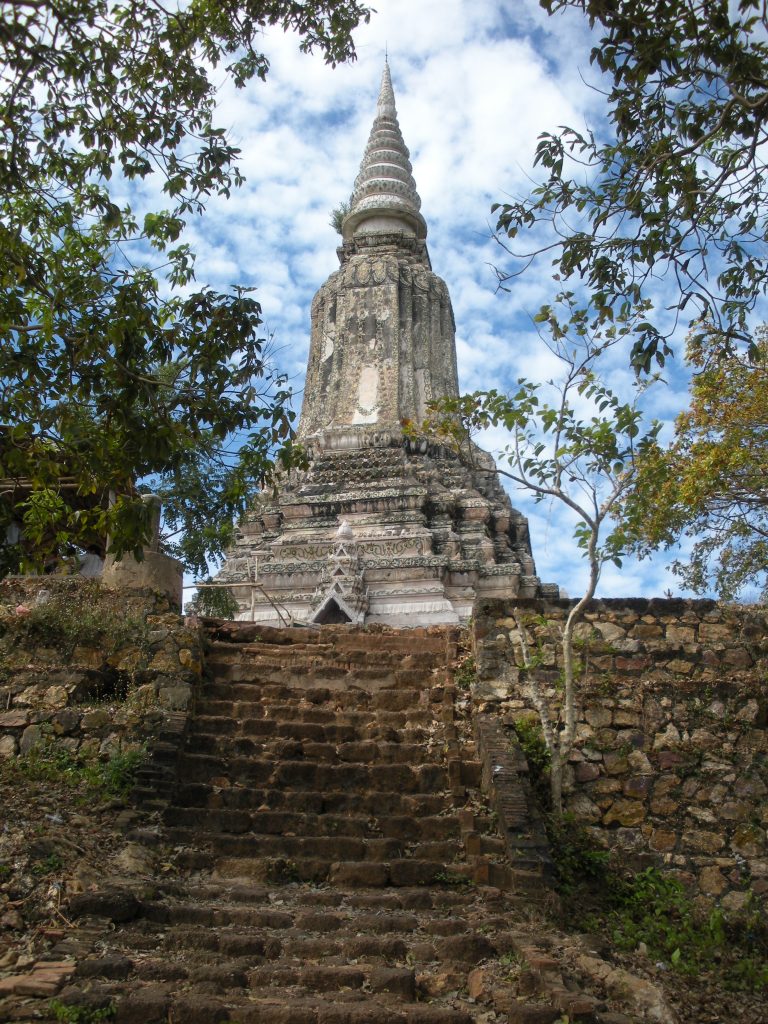
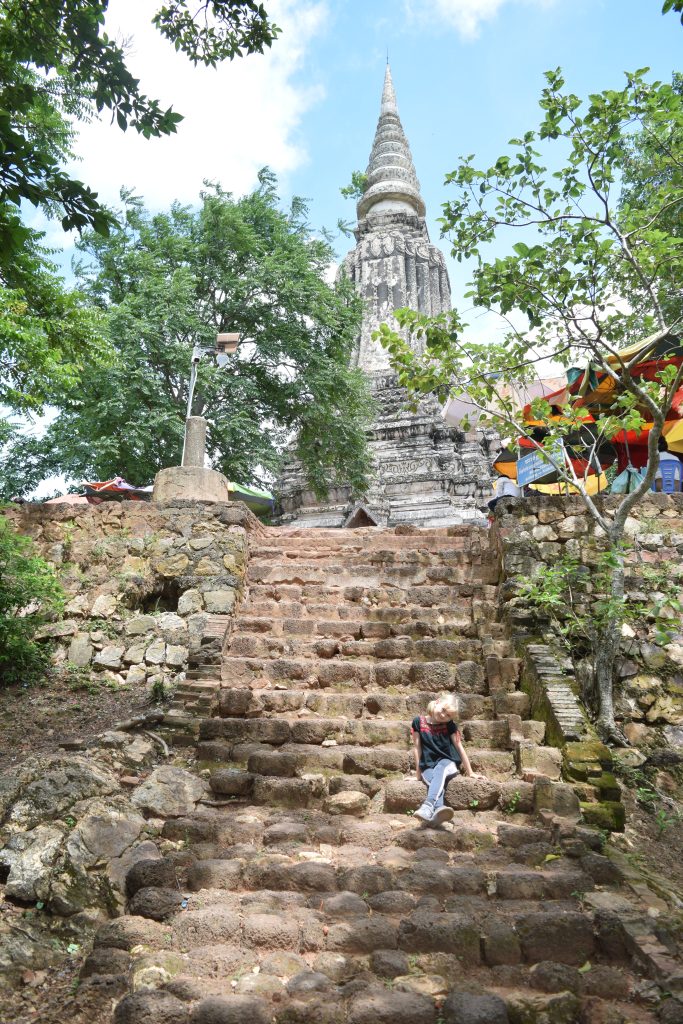
Solar powered lights had also been installed across Oudong mountain so that it can be visited at night. I’m curious what the experience would be like?
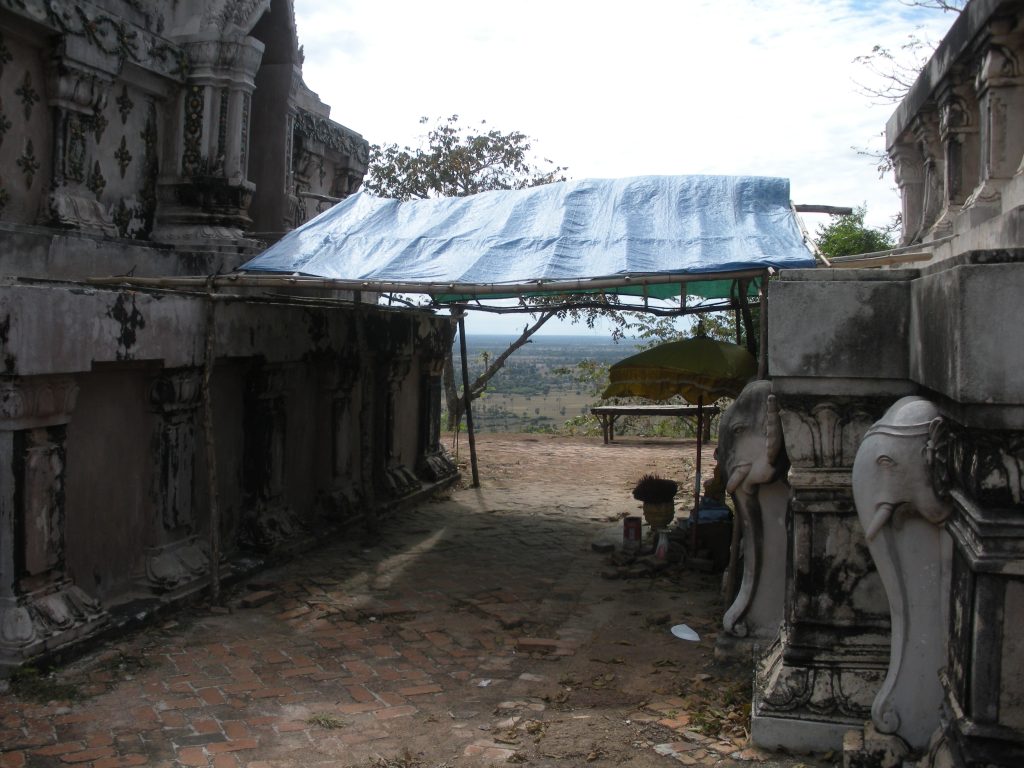
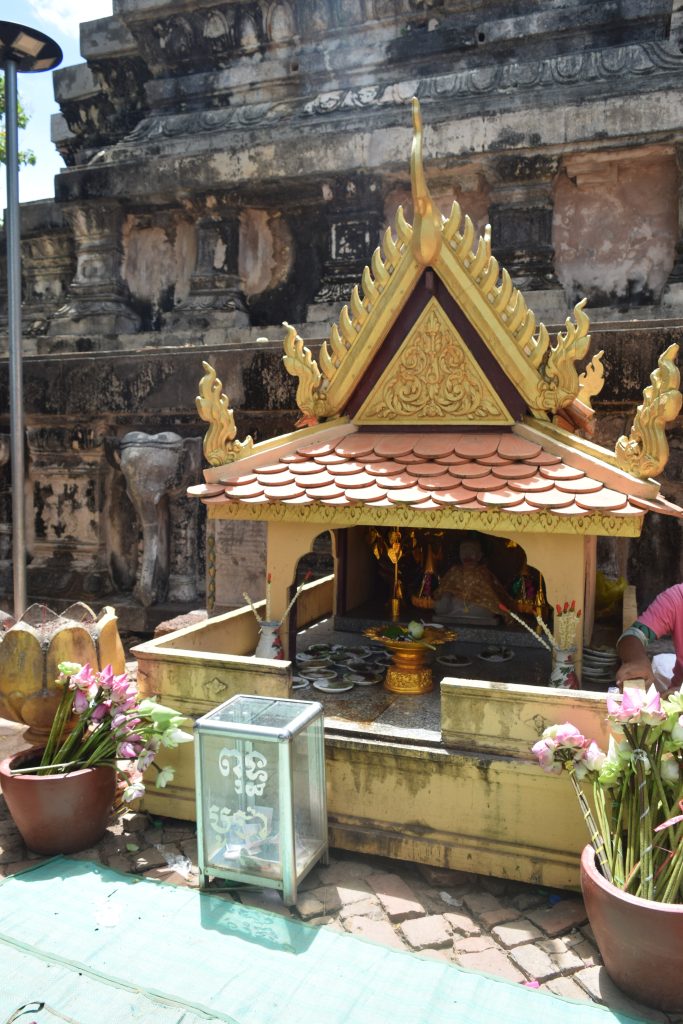
This buddha statue was protected by a tarp stretched between the two stupas back in 2008 but fifteen years later has a proper house.
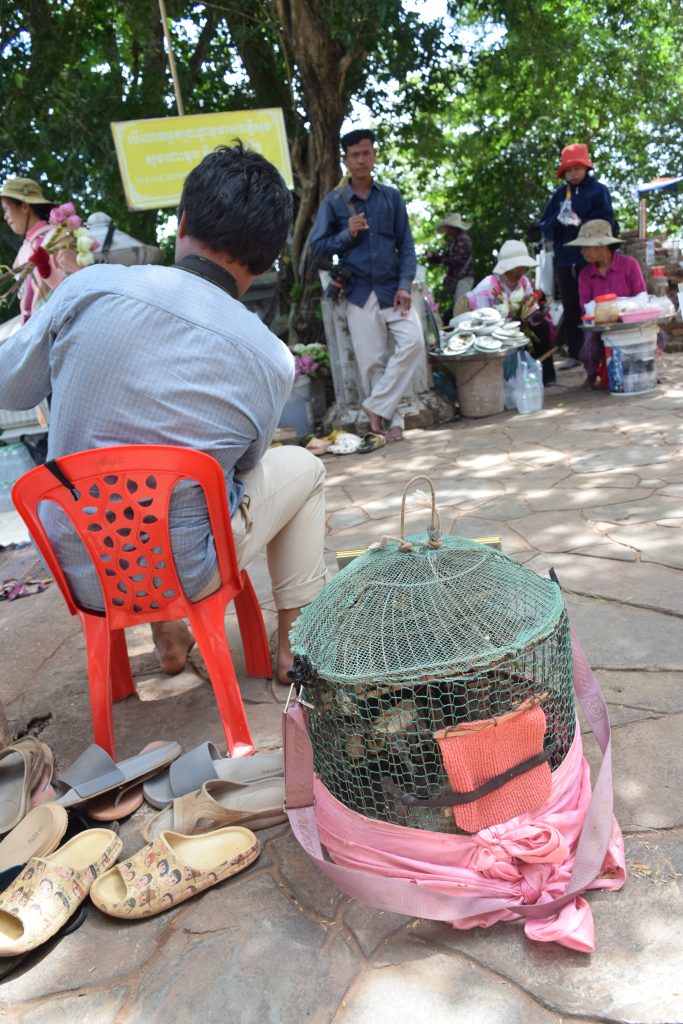
Another way to earn karma on the walk is to buy birds and release them. Of course, the birds have been trained to fly home at night so they can be sold again.
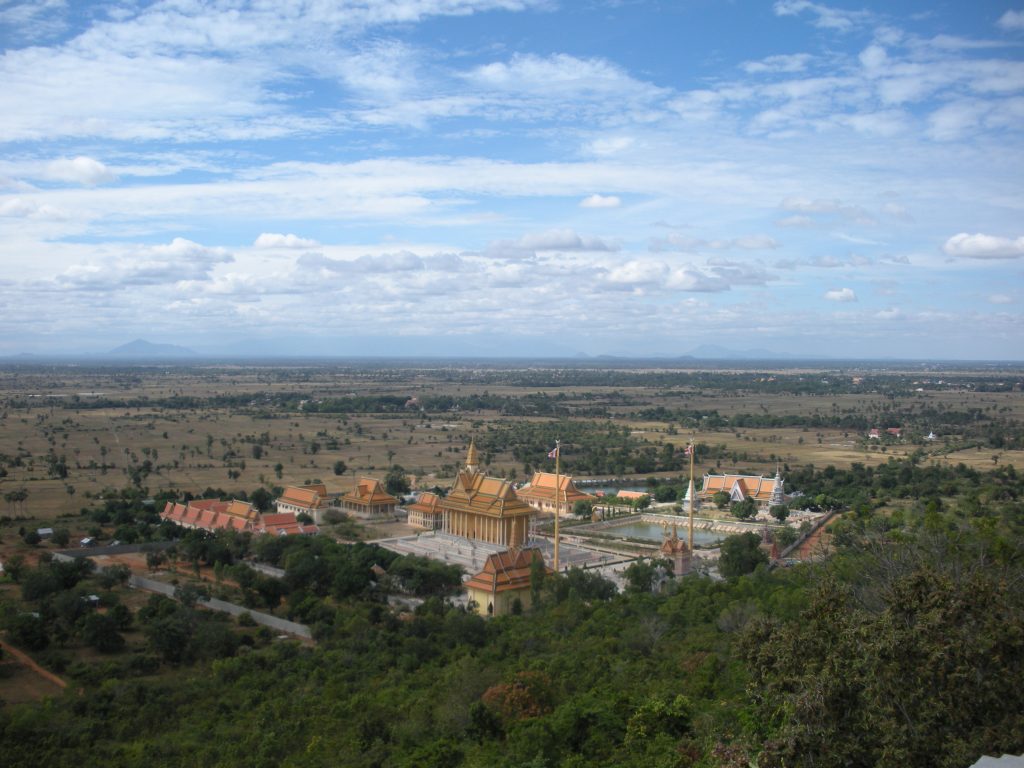
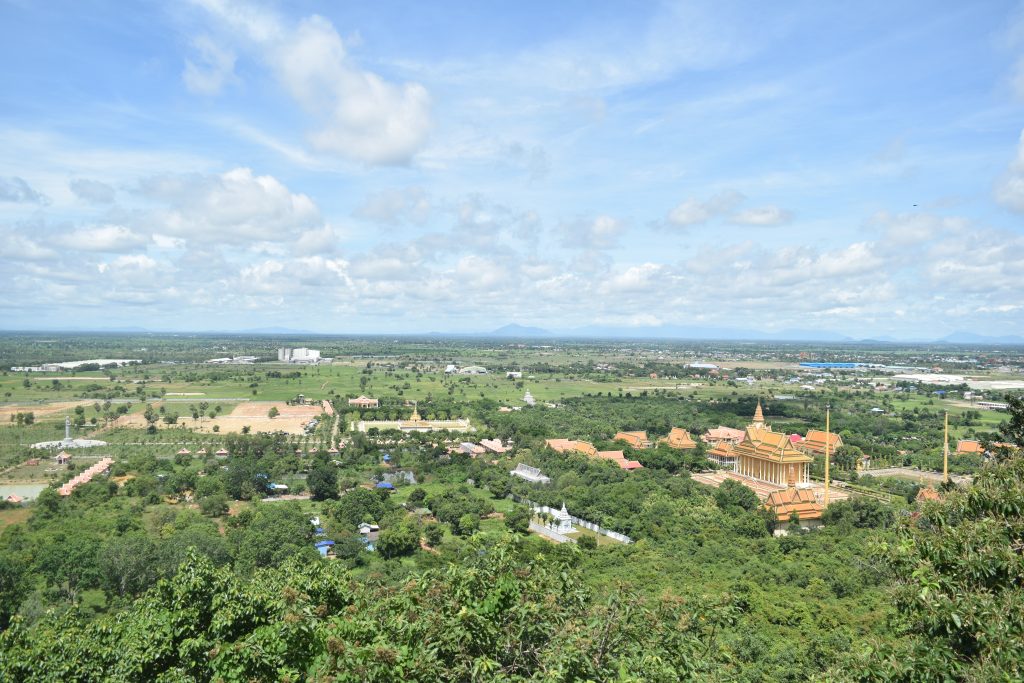
In 2008, the then new pagoda on the north side of Oudong reminded me of ancient Rome with it’s angular layout and clear structure. This has mostly been obscured by fifteen years of tree growth but still remains an impressive sight. I imagine that it’s also much more pleasant at the pagoda now that the trees have grown up. The large buddha statue they had started building in 2008 is long complete now.
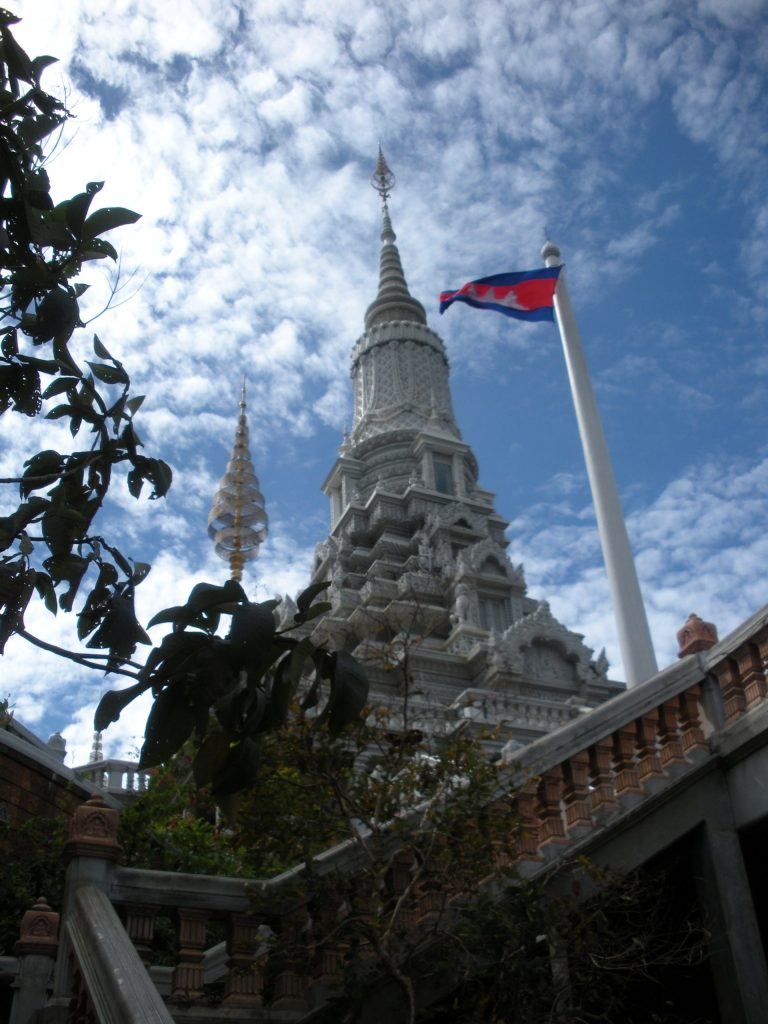
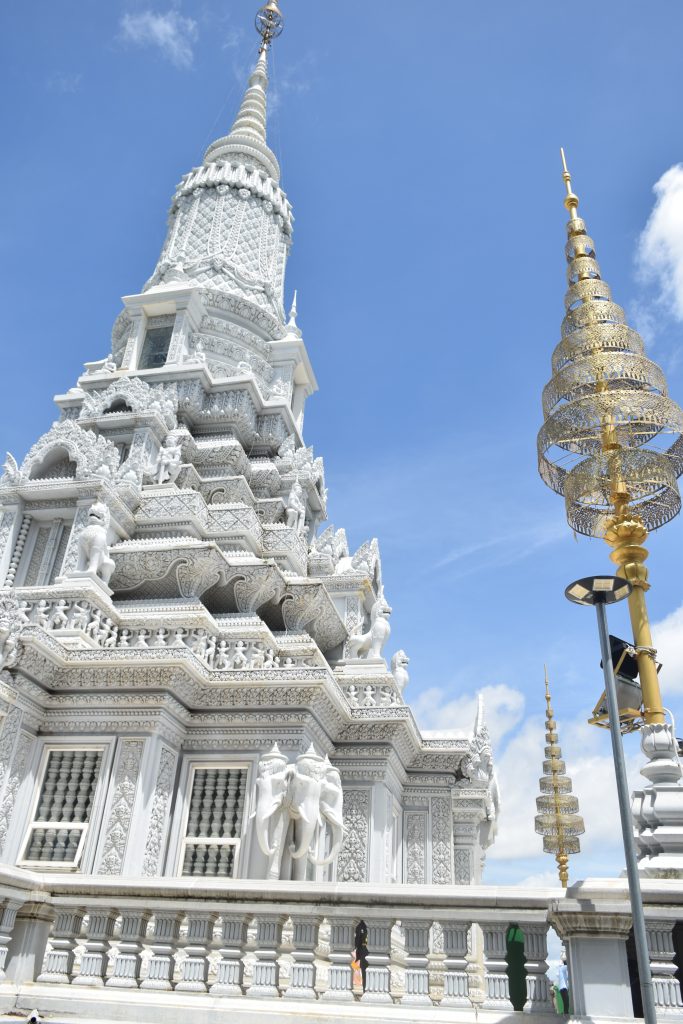
The ‘white stupa’ was completed in 2002 and is the newest on top of Oudong mountain. It was a light gray when I visited in 2008 but has been repainted white since then. In the noontime sun it magnified the heat and strained our eyes, but did make for an impressive sight.
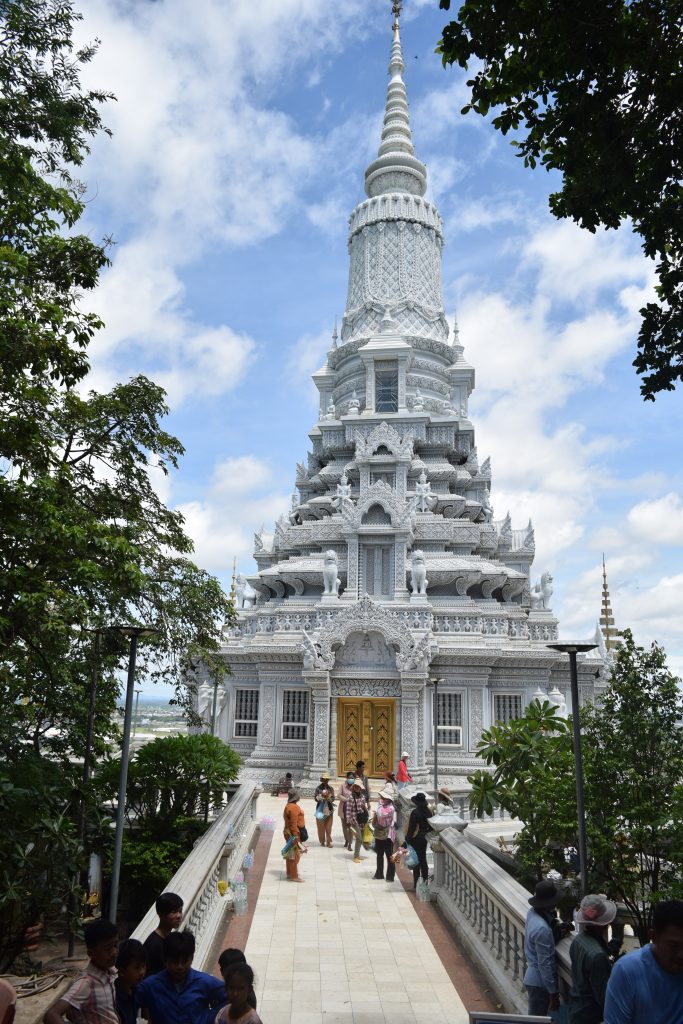
There were signs to remove shoes and hats around the white stupa. The locals all removed their shoes but they kept their hats on. I teased some of them but they all were too focused on the fact that I spoke Khmer and didn’t understand that I was teasing them for wearing hats.
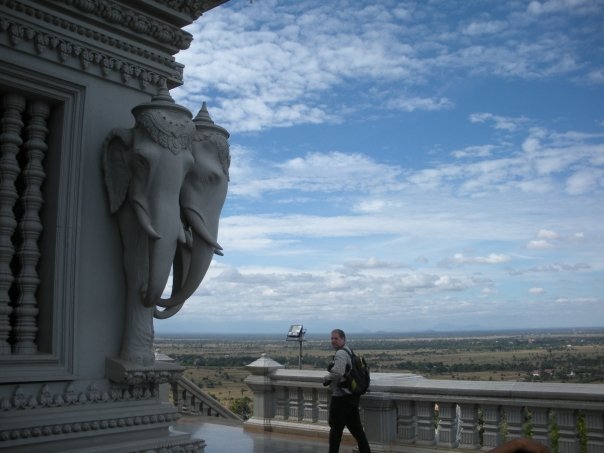
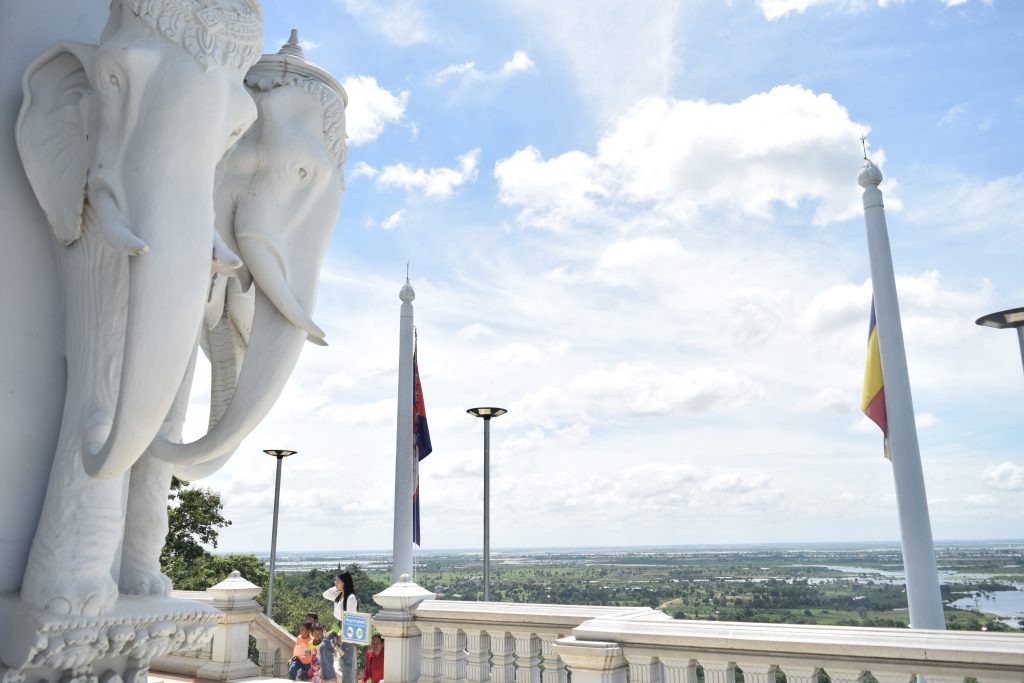
On each corner of the white stupa are three elephant heads. This might have some religious significance – I don’t know – but it’s certainly visually stunning. Especially with the vista beyond them.
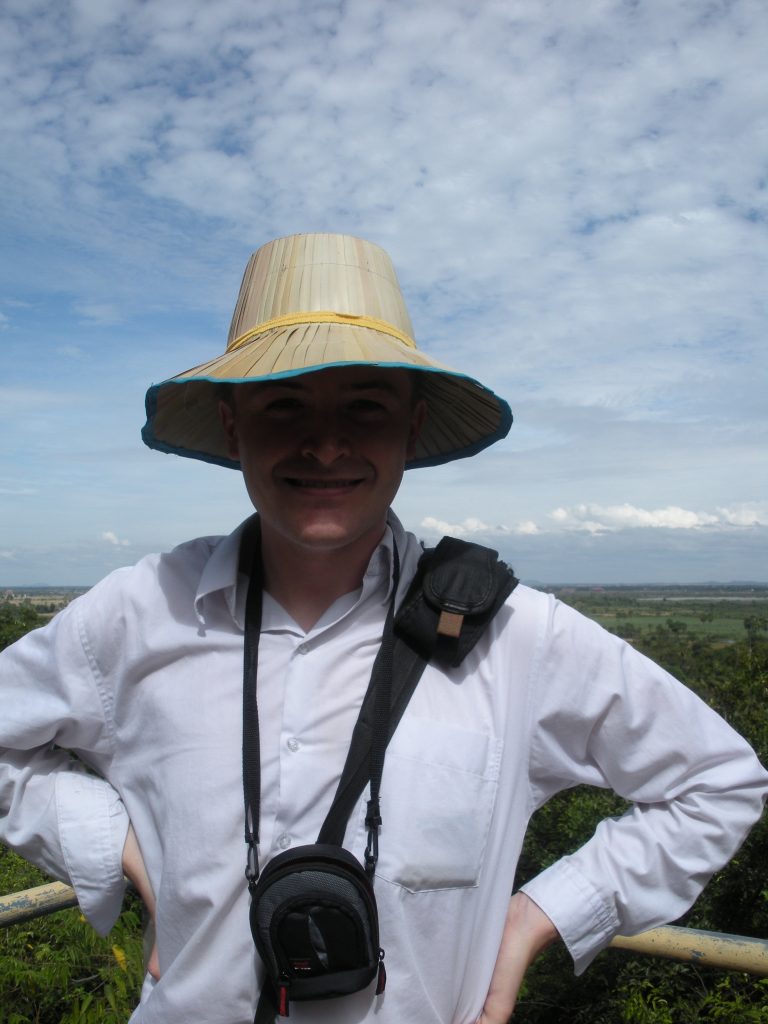
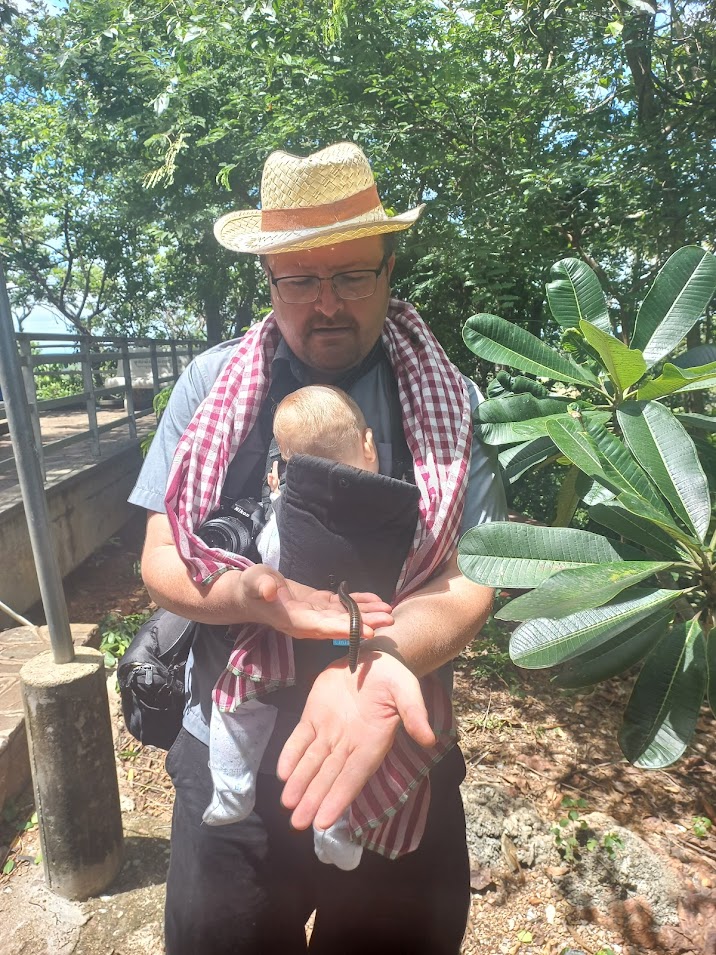
I don’t think my fashion sense has changed much over the last fifteen years. Except that I’m always careful to have a krama on me these days. It’s very useful when you have kids. Please also note the cool millipede I found to show the kids.
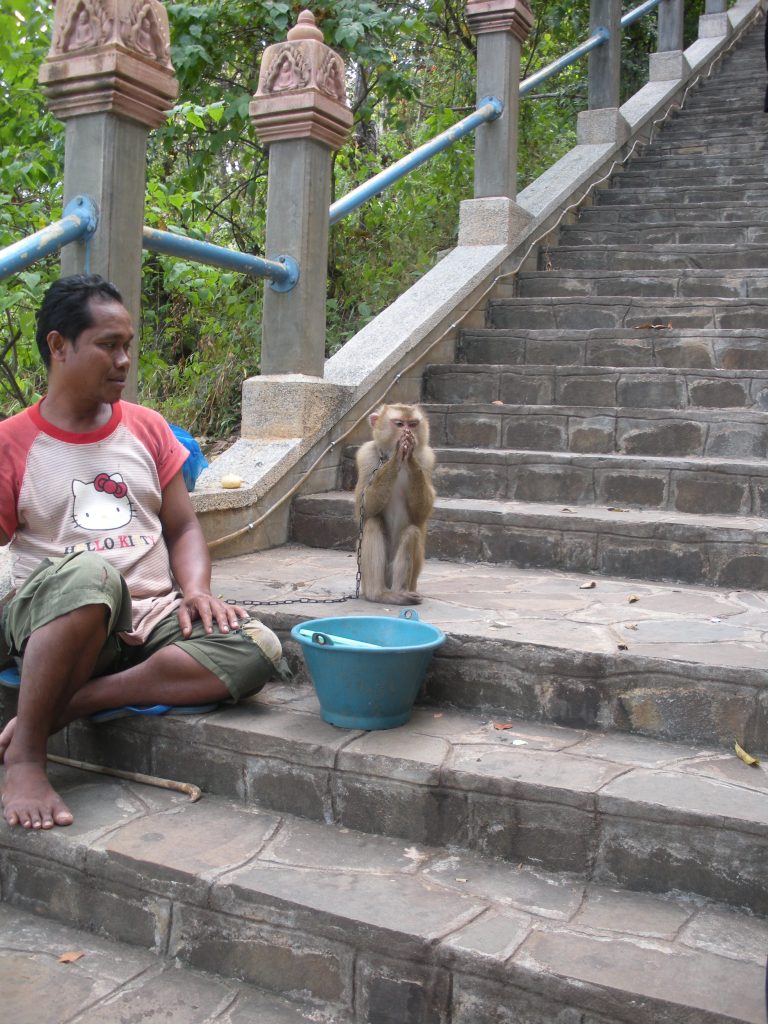
In 2008, there was a chained monkey that had been taught to beg. I didn’t see it when we visited this time. In fact, we didn’t see any monkeys at all but we were warned about them. We were told that they come down at 1PM when they’re fed bananas. This is similar to what we observed at Bokor Mountain where timed feedings at strategic locations is used to control the monkeys and prevent trouble. It seemed like the strategy was working.
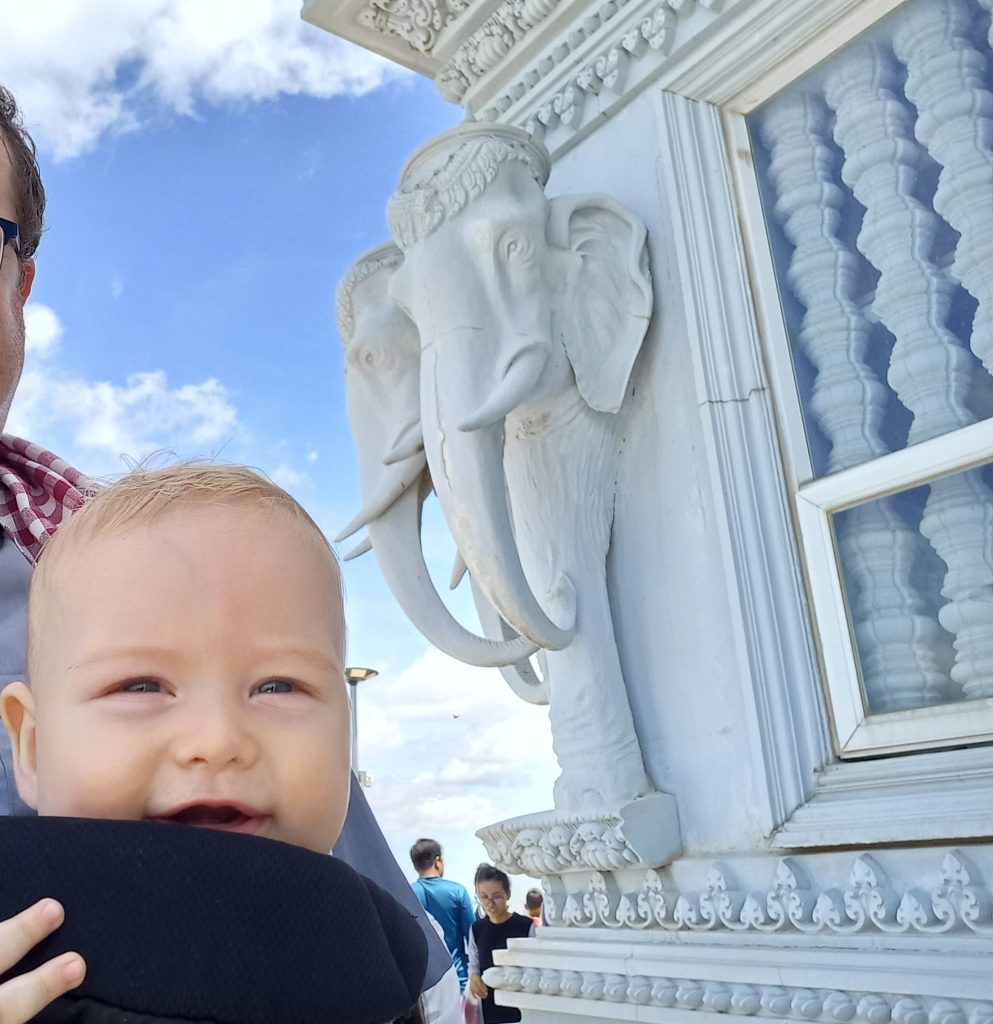
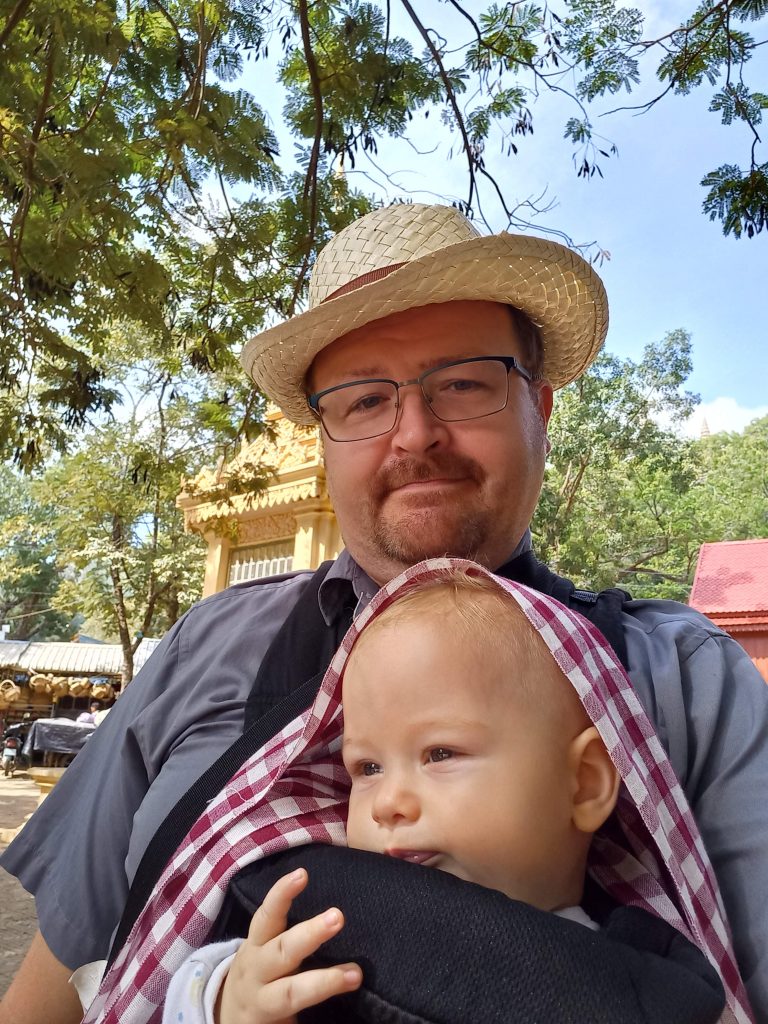
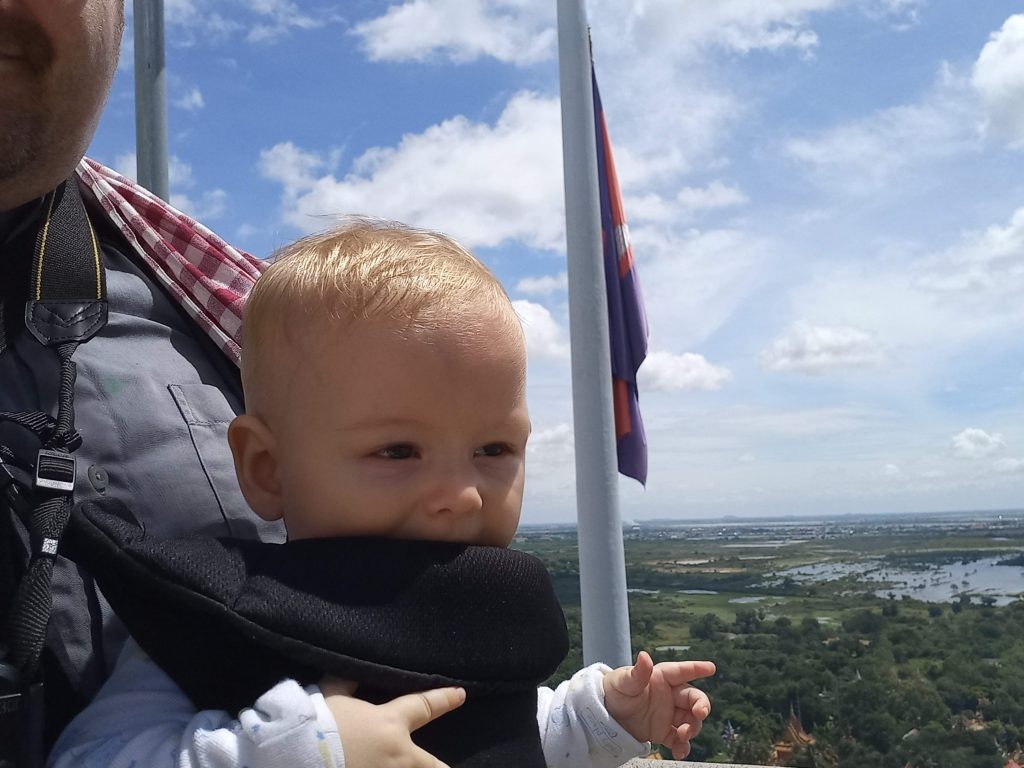
I’d be remiss if I didn’t include a few photos of Caleb on our walk at Oudong mountain. He was very social and outgoing again now that he’s feeling better. My krama made a great sun shield for him during the sunniest parts of our walk.
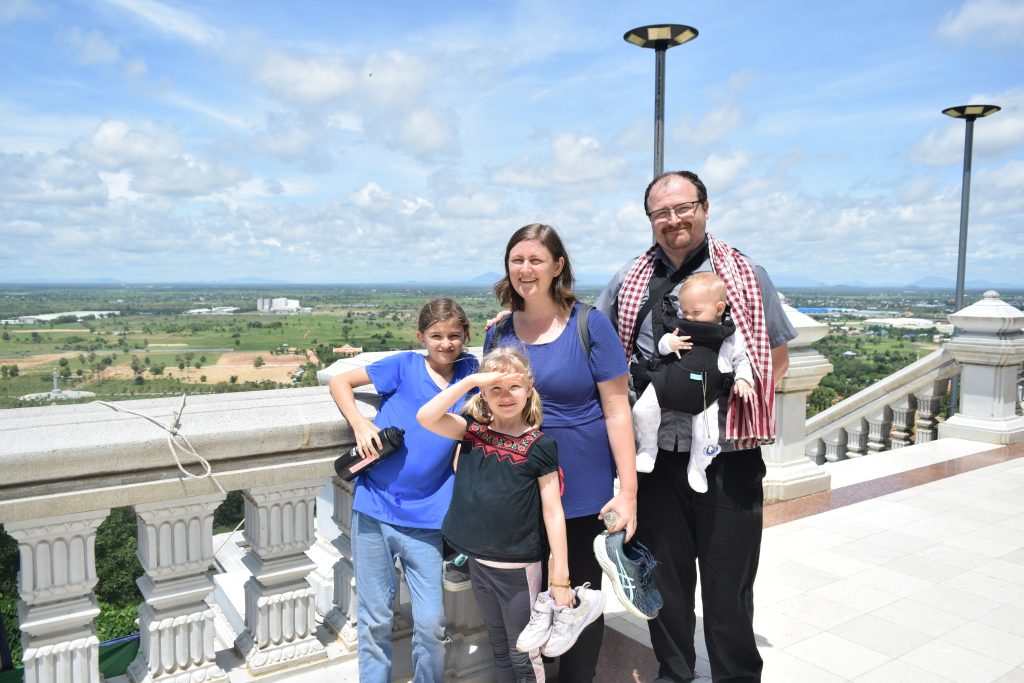
We visited Oudong in 1989 and it was totally abandoned. We were the only ones there (an MCC team of about 8 people) besides a couple of monks in the Watt. At that time they hadn’t had the chance to do any repairs since the Khmer Rouge time, although you could tell it had been a rather stately compound at one time. Ruth Keidel Clemens
Wow – I imagine the view out over the countryside has changed a lot since then.
Thanks for the information and particularly for the photos..
Thank you for commenting. Hope you’re doing well.